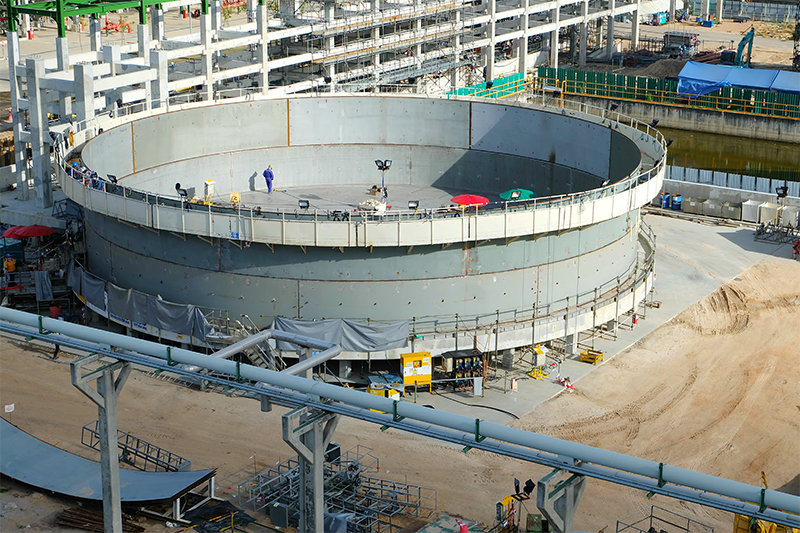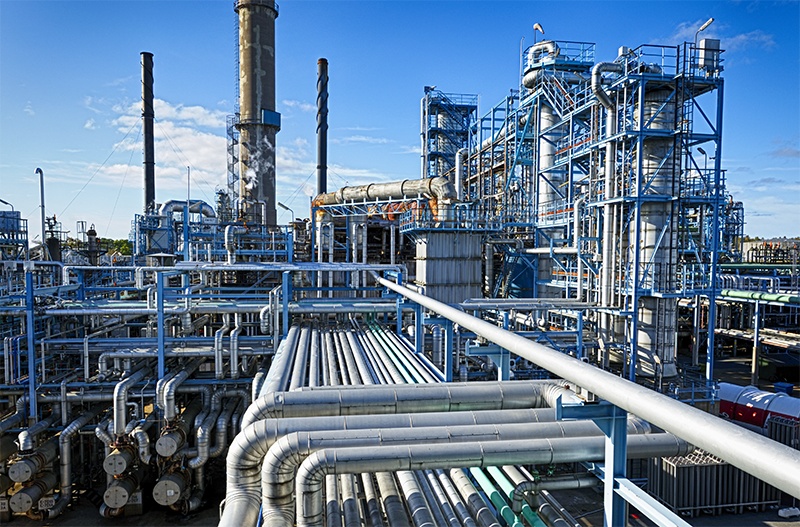Overview
The design and engineering phase is critical in the construction of above ground storage tanks (ASTs). It ensures that the tanks meet safety, operational, and regulatory requirements while also catering to the specific needs of the client.
- 1. Initial Consultation and Requirements Gathering
• Client Consultation: Understand client needs, storage capacity, and the type of liquids to be stored.
• Site Assessment: Evaluate the proposed site for soil conditions, environmental factors, and regulatory requirements. - 2. Conceptual Design
• Preliminary Design: Develop initial design concepts, including tank dimensions, shape, and configuration.
• Modeling: Use software tools to create 3D models of the tank and surrounding infrastructure for better visualization and planning. - 3. Detailed Engineering Design
• Structural Design:
o Calculate load-bearing requirements based on tank size, contents, and environmental factors (e.g., wind, seismic activity).
o Specify materials (e.g., carbon steel, stainless steel) based on corrosion resistance and strength.
• Piping and Ancillary Systems Design:
o Design inlet/outlet piping systems, including valves, pumps, and monitoring equipment.
o Ensure compliance with flow requirements and safety standards.
• Containment and Safety Features:
o Incorporate secondary containment systems to prevent spills (e.g., dikes or double-walled tanks).
o Design safety features such as emergency shut-off systems, pressure relief valves, and leak detection systems. - 4. Compliance with Standards and Regulations
• Industry Standards: Adhere to relevant standards such as:
o API 650 (Welded Tanks for Oil Storage)
o NFPA 30 (Flammable and Combustible Liquids Code)
o AWWA D100 (Water Storage Tanks)
• Environmental Regulations: Ensure designs meet environmental protection requirements set by local, state, and federal agencies. - 5. Detailed Plans and Specifications
• Construction Drawings: Create detailed construction drawings and specifications for all components of the tank and associated systems.
• Bill of Materials: Compile a comprehensive list of materials required for construction, including quantities and specifications. - 6. Review and Approval
• Client Review: Present detailed designs to the client for feedback and approval.
• Regulatory Submissions: Submit designs to relevant authorities for necessary permits and approvals.
Technology and Tools Used
• CAD Software: Utilize advanced CAD tools (e.g., AutoCAD, SolidWorks) for drafting and modeling.
• Simulation Software: Employ engineering simulation software for structural analysis and fluid dynamics.
Project Management and Coordination
• Interdisciplinary Collaboration: Work closely with other engineering disciplines (e.g., civil, mechanical, electrical) to ensure seamless integration of systems.
• Timeline Management: Develop a project timeline and milestones to ensure timely completion.
The design and engineering phase is essential to the successful construction of above ground storage tanks. At [Your Company Name], we are committed to delivering high-quality, compliant, and safe tank designs tailored to your specific requirements.
Overview
The construction of above ground storage tanks (ASTs) is a complex process that involves various stages, from site preparation to final commissioning. This ensures that the tanks are built safely, efficiently, and in compliance with all regulatory standards.
- 1. Site Preparation
• Site Assessment: Conduct geotechnical studies to evaluate soil conditions and determine the suitability for tank installation.
• Clearing and Grading: Clear the site of vegetation, debris, and obstructions. Level and grade the area to create a stable foundation. - 2. Foundation Construction
• Foundation Design: Develop a design based on the tank size and expected load. Options may include concrete slabs or compacted gravel bases.
• Excavation and Pouring: Excavate as needed, then pour concrete to create a sturdy foundation that can support the tank’s weight and contents. - 3. Tank Fabrication
• Material Selection: Choose appropriate materials (e.g., carbon steel, stainless steel) based on the liquid being stored and environmental conditions.
• Tank Assembly: Construct the tank components (bottom, shell, roof) in sections either at the manufacturing facility or on-site. - 4. Installation
• Erection of Tank Shell: Assemble the tank by lifting and positioning the shell sections onto the foundation. Ensure proper alignment and securing.
• Welding and Sealing: Perform welding operations to join tank sections. Inspect welds to ensure integrity and compliance with safety standards. - 5. Piping and Ancillary Systems
• Piping Installation: Install inlet and outlet piping systems, valves, and pumps as per design specifications.
• Safety Features: Integrate safety systems such as emergency shut-off valves, pressure relief valves, and spill containment systems. - 6. Electrical and Monitoring Systems
• Electrical Installation: Set up electrical systems for pumps, gauges, and safety equipment.
• Monitoring Systems: Install level indicators, leak detection systems, and telemetry for remote monitoring. - 7. Inspection and Testing
• Quality Control: Conduct inspections throughout the construction process to ensure compliance with specifications and standards.
• Hydrostatic Testing: Fill the tank with water to check for leaks and ensure structural integrity before it goes live. - 8. Final Touches
• Surface Treatment: Apply protective coatings to prevent corrosion and extend the tank’s lifespan.
• Site Restoration: Restore the surrounding area, ensuring proper drainage and access. - 9. Commissioning
• Final Inspections: Perform a thorough inspection of the entire system, ensuring all components are functioning as intended.
• Regulatory Adherence: Ensure compliance with local, state, and federal regulations, including environmental protection and safety standards.
• Safety Protocols: Implement strict safety measures throughout the construction process, including PPE for workers and emergency response plans.
The construction of above ground storage tanks requires careful planning, skilled labor, and adherence to safety and regulatory standards. At Mema Mekanik, we specialize in delivering high-quality AST construction tailored to your specific needs. For more information or to discuss your project, contact us.
Whether you’re looking for expert mechanical services for an upcoming project or ongoing maintenance support, Mema Mekanik Dizayn is ready to be your partner. Our deep industry experience, focus on safety, and commitment to innovation ensure that we can meet your needs and exceed your expectations.
ContactOur company specializes in providing a wide range of mechanical services essential for the oil and gas sector.
Mema Mekanik Dizayn is a trusted provider of specialized mechanical services for the oil and gas industry. With decades of experience and a commitment to excellence, we deliver mechanical solutions that support the full lifecycle of oil and gas operations, from exploration and extraction to production and distribution.
At Mema Mekanik Dizayn, our mission is to provide top-tier mechanical services that enhance the operational efficiency, safety, and sustainability of oil and gas infrastructure. We partner with our clients to deliver tailored solutions, ensuring that their projects are completed on time, on budget, and to the highest standards.





